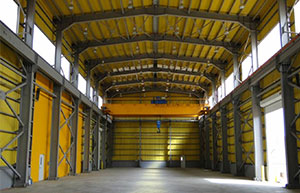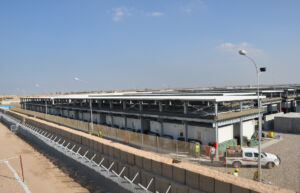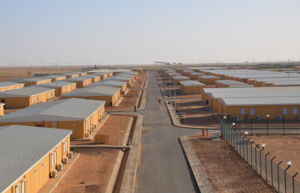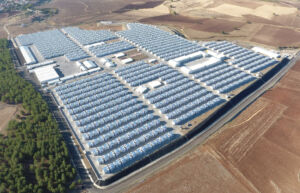Modern Methods of Construction (MMC): A Comprehensive Guide to Off-Site Building

Modern Methods of Construction (MMC) represent a fundamental shift in how buildings are designed, manufactured and delivered. Instead of constructing every project as a unique prototype entirely on site, MMC transfers a large portion of work into controlled factory environments supported by digital design, standardised components and streamlined installation. This approach increases construction speed, enhances predictability, improves quality and reduces environmental impact.
MMC is not a single technology but a spectrum of construction techniques that include volumetric modular units, 2D panelised systems, prefabricated bathroom pods, preassembled MEP modules, containerised technical buildings and various onsite process innovations. These methods collectively redefine how the global construction sector approaches efficiency, sustainability and scalability.
1. What Exactly Is MMC?
MMC refers to a broad family of systems, products and processes that improve productivity, quality, precision and sustainability compared with traditional on-site building.
Key characteristics of MMC include:
-
High levels of pre-manufacturing in factories
-
Digital enablement through BIM, parametric modeling and DfMA
-
Standardised “platform-based” building systems
-
Controlled assembly environments that reduce errors and increase precision
-
Reduced onsite labour, waste and health and safety risks
Common MMC systems:
-
Volumetric modular units (3D modules)
-
Panelised systems (2D structural panels)
-
Bathroom and kitchen pods
-
Precast concrete systems
-
Containerised power units, BESS enclosures, telecom shelters and e-houses
-
Preassembled MEP racks, risers and plant skids
-
Construction robotics and automated site equipment
2. The MMC Category Framework
To standardise terminology, the construction industry widely references a seven-category MMC framework.
MMC Categories Table (Text-Based)
Category 1: Pre-manufactured 3D systems
• Entire rooms or building volumes produced in factories
• Examples: modular housing, dormitories, modular hotels
• Pre-manufacture level: very high
Category 2: Pre-manufactured 2D systems
• Flat panels (walls, floors, roofs) assembled on site
• Examples: light steel panels, timber panels, precast wall panels
• Pre-manufacture level: high
Category 3: Non-systemised structural assemblies
• Factory-made components used with other systems
• Examples: precast beams, slabs, floor cassettes
• Pre-manufacture level: medium
Category 4: Additive manufacturing
• 3D printing of structural elements
• Examples: 3D printed walls or bridges
• Pre-manufacture level: emerging
Category 5: Non-structural assemblies
• Preassembled elements that support building functions
• Examples: bathroom pods, MEP racks, plant skids
• Pre-manufacture level: medium to high
Category 6: Site process improvements
• Productivity enhancements using traditional materials
• Examples: self-climbing formwork, robotics, advanced sequencing
• Pre-manufacture level: low to medium
Category 7: Site materials innovation
• New materials that enhance onsite performance
• Examples: high-performance concretes, hybrid materials
• Pre-manufacture level: low to medium
3. How MMC Projects Are Delivered
MMC requires a radically different delivery process focused on DfMA (Design for Manufacture and Assembly) and digital coordination.
MMC Delivery Flow (Text-Based)
-
Concept design and requirements
-
Digital design using BIM and parametric modelling
-
DfMA optimisation and platform-based design
-
Detailed factory engineering and manufacturing drawings
-
Off-site production of modules, panels or pods
-
Logistics planning and just-in-time delivery
-
Rapid onsite assembly and connection
-
Testing, commissioning and handover
Key principles:
-
Early design freeze to enable factory production
-
Platform-based grids and standard interfaces
-
Quality controlled production using automation
-
Parallel working: while groundworks occur on site, modules are built off-site
-
Fast onsite “stack and stitch” assembly of modules
4. Sector-Specific Applications
MMC’s flexibility makes it suitable for a wide range of industries.
Residential and Mixed-Use
-
Modular apartment buildings
-
Student accommodation
-
Townhouse developments with panelised systems
Benefits: faster build times, consistent quality, lower waste, improved energy performance
Healthcare and Field Hospitals
-
Modular operating rooms, imaging units and clinics
-
Rapid deployment medical camps
Benefits: infection control, repeatable clinical layouts, accelerated commissioning
Education and Public Buildings
-
Standardised classrooms and school blocks
-
Hybrid modular campus buildings
Benefits: repeatability, reduced disruption, scalable design
Energy and Industrial Infrastructure
-
Containerised substations and BESS units
-
Modular data centre blocks
-
MEP skids for tunnels or treatment plants
Benefits: factory testing, improved reliability, shorter outages
Defense, Military and Remote Camps
-
Command centres
-
Modular barracks and sanitary units
-
Trailer-mounted kitchens and medical units
Benefits: mobility, durability, rapid deployment
5. The Business Case for MMC
Studies across international markets highlight several measurable benefits when MMC is implemented correctly.
5.1 Time and Productivity
-
20 to 50 percent faster programmes
-
Parallel construction reduces total project duration
-
Significantly reduced onsite labour hours
-
Better performance in constrained urban sites
5.2 Cost and Whole Life Value
Although capital costs may sometimes be similar to traditional construction, MMC often provides value through:
-
Shorter preliminaries and faster revenue generation
-
Reduced rework and defects
-
Better lifecycle performance
-
Repeatable designs across multiple sites
-
Lower waste and lower logistics cost
5.3 Quality, Safety and Compliance
-
Factory conditions ensure precision
-
Better fire stopping, thermal detailing and airtightness
-
Reduced accidents due to fewer working-at-height operations
-
Consistent compliance with performance standards
5.4 Carbon and Sustainability
-
Lower embodied carbon through efficient structural systems
-
Reduced site emissions via shorter programmes
-
Improved operational energy performance
-
Fewer transport trips and material wastage
6. Barriers and Risks
Despite its advantages, several challenges remain:
-
High initial capital needed for factories and tooling
-
Strong need for consistent project pipelines
-
Lack of global standardisation in certification
-
Cultural resistance within traditional construction teams
-
Design flexibility concerns
-
Perceived investment risk by insurers and lenders
-
Factory underutilisation risks causing financial failure
Solving these issues requires long-term planning, integrated delivery models and stable partnerships between clients and manufacturers.
7. A Practical Roadmap for Implementing MMC
Define Strategic Objectives
Identify priorities such as:
• Faster delivery
• Sustainability targets
• Standardisation across multiple assets
• Workforce shortages
• Long-term cost efficiency
Match MMC Categories to Asset Types
Examples:
• Residential: Category 1 modules + Category 5 pods
• Education: Category 2 panels + Category 6 onsite improvements
• Industrial projects: Category 3 precast + Category 5 MEP skids
Invest in Digital Design and DfMA Capability
-
BIM-driven workflows
-
Parametric rule sets for standardised module families
-
Digital twins for logistics and assembly simulation
Rethink Procurement
-
Early manufacturer involvement
-
Long-term framework agreements
-
Platform-based design standards across portfolios
Measure Key Metrics
-
Pre-manufactured value (PMV)
-
Onsite labour hours
-
Programme duration
-
Carbon emissions
-
Defect levels at handover
These metrics help track maturity and ensure consistent performance improvement.
8. Conclusion
Modern Methods of Construction represent a shift from traditional, labour-intensive building practices toward industrialised, digitised and standardised construction. By moving work into factories, standardising components and applying advanced digital tools, MMC provides compelling advantages in speed, quality, sustainability and safety.
Projects in housing, healthcare, education, energy, industrial facilities and remote workforce camps have already proven that MMC is not experimental. It is a mature and scalable alternative to conventional construction.
When combined with strong digital design capability, intelligent procurement and long-term planning, MMC is one of the most transformative innovations shaping the future of global construction.



